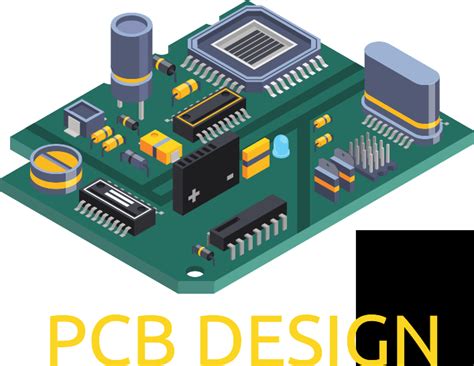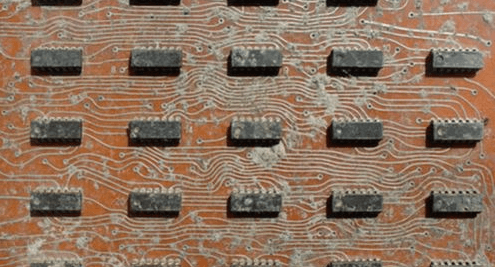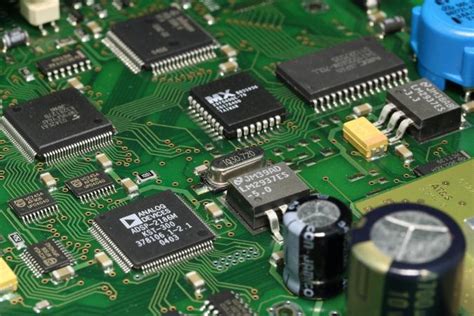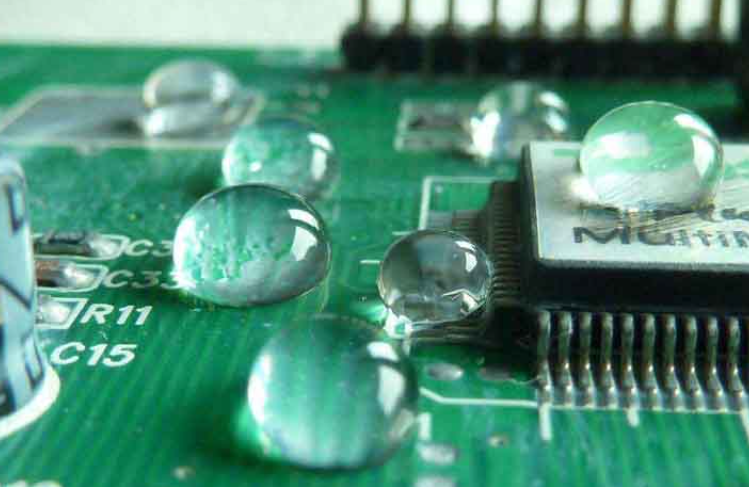Optimizing Circuit Card Assembly Design for Enhanced Performance
Key Takeaways
Understanding the intricacies of pcb assembly design is essential in producing effective and high-quality devices. At the core of any successful pcba is a well-thought-out design that prioritizes not only functionality but also efficiency and reliability. Optimizing circuit card assembly design involves a myriad of strategies that focus on enhancing overall performance. Techniques such as careful component placement, trace routing, and minimizing electromagnetic interference are crucial. Additionally, selecting high-quality materials can significantly impact the longevity and durability of the assembled product. As industries strive to meet rising demands, implementing cost-reduction strategies without compromising quality becomes paramount. Modern advancements in technology, like automation and the integration of advanced software tools for simulation and prototyping, are shaping the future landscape of pcb assembly. These tools enable designers to visualize potential challenges early in the process and troubleshoot various scenarios efficiently, ultimately leading to better end products with fewer defects. By adopting these best practices and remaining abreast of innovative trends, companies can not only enhance their circuit card assemblies but also position themselves competitively within the market.
Understanding Circuit Card Assembly Design: Principles and Fundamentals
Circuit Card Assembly (CCA) design, often referred to as PCB assembly or PCBA, plays a pivotal role in modern electronics. At its core, CCA involves integrating electronic components onto a substrate, enabling the functionality of electronic devices. Understanding the principles and fundamentals of this process is essential for engineers and designers aiming to produce reliable and efficient assemblies.
A well-designed circuit card promotes better signal integrity, which ensures that electronic signals are transmitted without distortion or loss. This can significantly enhance overall system performance. Additionally, careful consideration of thermal management in CCA design is crucial; overheating can lead to component failure and reduced lifespan of the entire assembly.
Another fundamental aspect is the selection of materials. Utilizing high-quality substrates not only contributes to better electrical performance but also supports mechanical stability and durability. Commonly used materials include FR-4 for standard applications and polyimide for flexible circuit boards.
Furthermore, understanding the layout principles, such as minimizing trace lengths and optimizing component placement for efficient routing, can vastly improve manufacturing processes while reducing potential errors during assembly.
To illustrate these principles more clearly, here’s a simple comparison table reflecting key components involved in PCB assembly:
| Component Type | Role | Quality Impact |
|---|---|---|
| Substrate | Foundation for components | Affects overall lifespan |
| Components | Perform specific functions | Determines functionality |
| Traces | Electrical pathways | Influences signal integrity |
| Solder | Connects components to PCB | Impacts reliability |
Implementing these principles effectively during pcb assembly ensures not just optimal performance but also increases production efficiency while keeping costs manageable. By focusing on these foundational concepts, designers can pave the way towards creating assemblies that not only meet but exceed performance expectations in various applications.

Strategies for Enhancing Performance in Circuit Card Assembly
In the quest for better performance in PCB assembly, several innovative strategies can be employed. One effective approach is to focus on the design of the PCBA itself, ensuring that layout considerations are optimized to minimize signal interference and enhance power distribution. Implementing simulation tools during the design phase can significantly aid engineers in visualizing potential issues and rectifying them before actual production begins. Additionally, selecting high-quality components is crucial; superior materials can lead to improved thermal management and overall reliability. Another critical strategy involves adopting modular assembly techniques that allow for the easy upgrade and replacement of components without re-engineering the entire board. This not only improves performance but also contributes to sustainability by extending the lifecycle of existing designs. Furthermore, applying lean manufacturing principles ensures that unnecessary steps are eliminated from the production process, thus streamlining operations and reducing costs while maintaining high quality. Investing in automation technologies also enhances precision in assembly, further driving down error rates and improving throughput levels. Ultimately, focusing on these strategies not only strengthens the functionality of circuit card assemblies but also ensures competitive advantage within a rapidly evolving industry landscape.

Improving Reliability in Circuit Card Assemblies: Techniques and Approaches
Reliability in circuit card assemblies (CCAs) is crucial for ensuring the long-term function of electronic devices. One primary technique for enhancing this reliability is through meticulous pcb assembly design. This involves selecting high-quality components that can withstand environmental stressors, such as temperature fluctuations and humidity, which can significantly impact performance. Additionally, implementing robust soldering techniques and using reliable pcba materials contribute to creating more resilient structures. Another effective approach is to integrate redundancy into the design; this means duplicating critical components so that if one fails, others can take over immediately, thus maintaining functionality. Furthermore, employing thermal management strategies—such as heat sinks or thermal pads—can prevent overheating and extend the life of sensitive components. Regular testing during the prototype phase is also essential; it allows designers to evaluate failure modes and make necessary adjustments before mass production. Ultimately, by focusing on these techniques and embracing a holistic view of pcb assembly, manufacturers can significantly improve the reliability of their products while reducing potential failures in the field.
Cost-Reduction Techniques in Circuit Card Assembly Production
Reducing costs in circuit card assembly (CCA) production is essential for manufacturers striving to remain competitive in today’s market. One effective approach involves optimizing the pcb assembly process by implementing lean manufacturing principles, which focus on minimizing waste at every stage. By streamlining workflows and eliminating non-value-added activities, companies can enhance their production efficiency and lower operating expenses. Additionally, incorporating automation technologies in the pcba process can significantly reduce labor costs while maintaining high-quality standards.
Moreover, selecting cost-effective materials without compromising on performance is crucial. Utilizing alternative materials or suppliers that offer competitive pricing can yield substantial savings. It’s also beneficial to invest in robust testing methods early in the design phase, which helps identify potential issues before mass production begins, thereby preventing expensive rework or scrap later on.
“By prioritizing strategic partnerships with suppliers and leveraging advanced manufacturing techniques, businesses not only cut costs but also enhance their capabilities.”
Another key strategy involves regular training for workers to ensure they are adept at using the latest tools and techniques effectively. Engaging them in continuous improvement processes fosters a culture focused on efficiency and quality enhancement—a crucial factor for successful pcb assembly.
In conclusion, the deliberate implementation of these cost-reduction techniques not only optimizes circuit card assembly processes but also contributes significantly to a company’s bottom line while ensuring reliable product delivery.
Advanced Technologies Shaping the Future of Circuit Card Assembly Design
The landscape of circuit card assembly design is continually evolving, fueled by advanced technologies that enhance the efficiency and effectiveness of pcb assembly processes. Innovations such as automated inspection systems and high-density interconnect (HDI) technology are at the forefront of this transformation, allowing designers to create more compact and complex circuit board layouts, thereby improving overall pcba performance. The integration of machine learning algorithms into production processes offers unprecedented opportunities for predictive maintenance and quality assurance, significantly minimizing defects while reducing costs. Additionally, new materials designed to withstand higher temperatures and greater mechanical stress are enhancing the durability of assemblies, ultimately leading to more reliable products. As technology continues to advance, embracing these innovations within circuit card assembly design will be crucial for companies seeking to maintain a competitive edge in a rapidly changing industry landscape. By adopting best practices that incorporate these technologies, businesses can not only optimize their pcb assembly processes but also ensure that they are prepared for future challenges and opportunities in the market.
Best Practices for Effective Circuit Card Assembly Optimization
In the realm of pcb assembly design, implementing best practices is crucial for achieving optimal results. One of the primary strategies involves thorough planning and design-for-manufacturability (DFM) principles, which ensure that the pcba process aligns closely with production capabilities. It is essential to simplify designs where possible; this not only aids in reducing manufacturing complexity but also enhances product reliability. Additionally, employing robust component selection is vital; choosing high-quality materials significantly impacts both the performance and longevity of the assembly.
Moreover, leveraging automation technologies in the production line can lead to substantial efficiency gains, reducing setup time and minimizing human error during soldering processes. The incorporation of advanced testing techniques should not be overlooked either; implementing a stringent testing protocol early in the production can identify defects before they escalate into costly faults later on.
Following industry standards such as IPC guidelines ensures that designs meet necessary quality benchmarks. Regular training programs for engineers and technicians can further enhance their understanding of current technologies and methodologies in circuit card assembly, thereby contributing to overall process improvement. By adopting these practices, professionals in the field can realize not only enhanced performance but also increased efficiency and reduced costs in their pcb assembly operations.
Case Studies: Successful Implementations of Optimized Design Strategies
The realm of pcb assembly has seen remarkable innovations, and numerous case studies demonstrate the tangible benefits of optimized pcba design strategies. For instance, a leading electronics manufacturer implemented a comprehensive circuit card assembly design optimization project that resulted in a 30% reduction in production costs while simultaneously enhancing the performance and reliability of their products. By adopting advanced techniques such as automated manufacturing processes and improved material selection, they were able to achieve greater consistency in their pcb assembly outputs. In another remarkable case, a technology startup focused on creating high-density pcba solutions utilized simulation tools to identify potential design flaws early in the development cycle. This proactive approach not only decreased development time but also significantly reduced the number of prototypes needed, leading to substantial cost savings. These case studies highlight how strategic investments in design optimization can pave the way for superior performance characteristics while ensuring reliability and cost-effectiveness in circuit card assembly. Such implementations serve as valuable benchmarks for other organizations aiming to enhance their production processes and outcomes in the competitive landscape of electronics manufacturing.

The Role of Simulation and Prototyping in Circuit Card Assembly Design
In today’s competitive landscape, the role of simulation and prototyping in circuit card assembly design (also known as pcb assembly) has become increasingly vital for optimizing performance and enhancing reliability. By utilizing sophisticated simulation tools, designers can visualize the dynamics of their pcba before physical production begins. This virtual modeling allows for the identification of potential design flaws and integration issues, significantly reducing the likelihood of costly revisions later in the manufacturing process. Moreover, simulation enables teams to explore various configurations and materials, ensuring that each iteration pushes the boundaries of efficiency while adhering to stringent reliability standards. Coupled with rapid prototyping techniques, it becomes achievable to produce physical models that facilitate comprehensive testing under real-world conditions. This blend of simulation and rapid prototyping not only streamlines the development cycle but also fosters innovation by presenting engineers with a safe environment to experiment with advanced ideas before committing to full-scale production. Overall, these practices are crucial in refining pcb assembly processes, leading to higher-quality products that meet consumer demands while driving down production costs through increased efficiency.
Conclusion
Optimizing circuit card assembly design is crucial for achieving maximum efficiency and cost-effectiveness in the realm of pcb assembly. Through the implementation of innovative strategies detailed throughout this article, organizations can not only boost the overall performance of their pcba projects but also enhance product reliability and longevity. By harnessing advanced technologies and adhering to best practices, manufacturers can streamline their processes, leading to significant reductions in production costs without compromising quality. Furthermore, the use of simulation and prototyping serves as a vital tool in predicting potential issues before full-scale production, ensuring that the final product meets rigorous industry standards. The takeaway from these insights is that a thoughtful approach to pcb assembly, prioritizing performance and reliability while being mindful of expenses, can greatly benefit manufacturers striving for excellence in a competitive market. As the landscape of circuit card assembly design continues to evolve, staying informed about emerging trends and techniques will empower businesses to maintain their edge and achieve sustainable growth.

FAQs
What is PCB assembly and why is it important?
PCB assembly, often referred to as PCBA, is a crucial process in electronics manufacturing where components are mounted on printed circuit boards. It serves as the foundation for electronic devices, ensuring they function correctly and reliably.
What are the common challenges in circuit card assembly design?
Challenges in circuit card assembly design include managing component density, ensuring signal integrity, and minimizing production costs. Addressing these challenges requires innovative strategies and an understanding of both the technology and market demands.
How can performance be enhanced in PCB assemblies?
To enhance performance, it is essential to focus on optimizing trace layouts, selecting appropriate materials, and implementing thermal management solutions. These steps can lead to lower resistance and improved electrical performance.
What techniques can be used to improve reliability in PCBA?
Techniques for improving reliability include rigorous quality control measures, thorough testing protocols, and the use of high-performance materials. Designing for manufacturability also plays a critical role in ensuring long-term reliability.
What cost-reduction techniques are available for circuit card assembly production?
Cost-reduction techniques encompass bulk purchasing of components, optimizing manufacturing processes, and employing advanced automation technologies. Efficient logistics also contribute significantly to reducing overall production costs.







